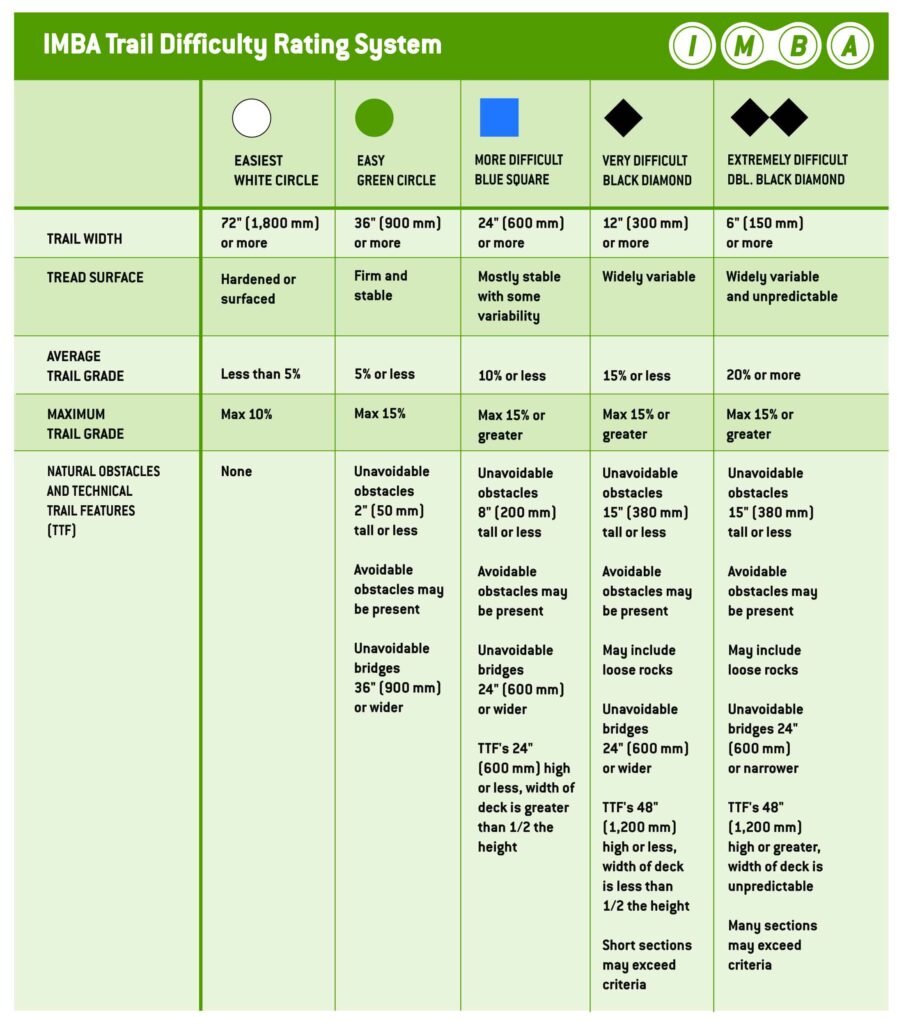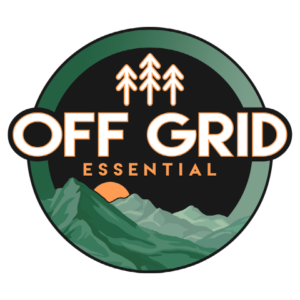Mountain Bike trail ratings can be intimidating if you have never seen them before. Fear not, we have you covered in an easy-to-understand breakdown.
Why Do Mountain Bike Trail Ratings Matter?
You did it, you’ve got the bikes packed up into the truck. You’ve finally headed away from the burbs and paved bike paths to go rage some downhills off-grid. Maybe you need to get your adrenaline pumping with sharp turns, obstacles and you love the thought of narrowing missing trees. Or maybe you just want a nice, relaxing ride in the true outdoors, but aren’t looking for anything crazy.
I wouldn’t recommend just googling “mountain bike trails near me”, because you might get a result but, you won’t know what you’re getting into until you show up, and it may be more (or less) than you planned for.
You’re not familiar with mountain bike trails and you’re pretty sure some are hard and some are easier, right? Well, how do you know the difference, how to find them, and how to identify each once you locate a trailhead? We’ve compiled the info you’re looking for right here in this breakdown of Mountain Bike Trail rating system guide.
Know Your Limits
Look, I’m a guy, and sometimes, I’m an idiot. When I first picked up a new mountain bike, it gave you a bit of a superpower feeling. The sexy frame angles, the fat tires, suspension components, hydraulic Brakes. I mean, with this bike, I can do it all! Right? Well, yes and no, the bike can do it all, but you and me? We can’t do it all.
It’s important to know your skill level, your limits and take the necessary precautions to keep yourself as relatively safe as you can because regardless of precautions, any outdoor/off-road activity can still be dangerous. There, the lawyers are happy, you’ve been warned. Now, let’s go rage! But first, let’s dive into the Mountain Bike Trail Ratings.
If your unsure where to start, check out this video that will give you some real-world examples of what happens when someone new to MTB’ing hits a advanced trail 🙂
What Are Mountain Bike Trail Ratings
The International Mountain Biking Association (IMBA.com) has a standardized trail rating system that is used globally and known as Mountain Bike Trail Ratings. Helping riders of all ages know exactly what to expect when you hit a trailhead in a new location. It’s broken up in to easy to remember symbols made up of shapes and colors broken down below along with an infographic and video:
White Circle (Easiest):
72 inches wide or greater. Hardened or Surfaced trail. Less than 5% in Average Trail Grade (uphill or downhill changes) with no more than 10% at one portion. No obstacles or Technical trail features.
This will be the entry-level trail that riders of all ages and abilities can tackle. Great for introducing the kids to riding in the outdoors.
Green Circle (Easy):
36 inches wide. Firm and Stable trail. 5% or less in Average Trail Grade (uphill or downhill changes) with no more than 15% at one portion. Unavoidable Obstacles 2inches in height or less (think tree roots and small rocks faces). Avoidable obstacles may be present. Unavoidable Bridges 36 inches or wider may be present.
Blue Square (More Difficult):
24 inches wide. Mostly Stable surface with some variability. 10% or less in Average Trail Grade (uphill or downhill changes) with no more than 15% at one portion. Unavoidable Obstacles 8 inches in height or less (think larger tree roots and larger boulder type rocks). Avoidable obstacles may be present. Unavoidable Bridges 36 inches or wider may be present. Technical Trail Features (TTF’s) 24 inches high or less.
Black Diamond (Very Difficult):
12 inches wide (yikes!). Widely Variable surface. 15% or less in Average Trail Grade (uphill or downhill changes) with no more than 15% at one portion. Unavoidable Obstacles 15 inches in height or less. Loose Rocks on the trail. Unavoidable Bridges and 48 inch TTF’s. Short sections may exceed criteria.
Double Black Diamond (Extremely Difficult):
6 inches wide (yikes again!). Widely Variable and unpredictable surface. 20% or less in Average Trail Grade (uphill or downhill changes) and 15% or greater at any one portion. Unavoidable Obstacles 15 inches in height or greater. Loose Rocks on the trail.
Unavoidable Bridges and 48 inch TTF’s. Many sections may exceed these criteria. In other words, you need to REALLY build-up to these double black diamond ratings. It’s not for recreational weekenders, at least not me…..yet.

Location, location, Location.
Where you live really doesn’t matter, but it can make the difference between having 5 or 500 trails within 2 hours of your house. One app that is highly recommended (I don’t make a penny from this) is the MTB Project App link here.
This app will have a GPS map of your location and show you trails you didn’t even know where near you. Additionally, you can save your GPS maps by each state and download them for when you’re off-grid but still need to find your way around.
Additionally, the same Mountain Bike Trail Ratings discussed here are listed and highlighted on the course in that app. More on that topic here. Downloading by the state will really help you when you nomadically traveling around off-grid but didn’t download all areas. Having the state download will give you all sorts of options to explore new trails regardless of cell phone service.
I have found that for me and my family, the Greens are very easy and the kids don’t really feel challenged (9/10yo kids). Once we do the Blue Trails the difficulty really jumps up for them and they find those to be very fun. We have never tried the Black Diamonds but I’m sure if you’re skilled enough they are amazing.
8 Essential Items For Mountain Bikers
- Crankbrothers M19 Multitool
- Osprey Raptor 10 Hydration pack
- Crankbrothers Flat Stamp
- ROAM Phone Bike Mount
- Vibrelli Mini Bike Pump Flat Tire Repair
- Yakima Gatekeeper Tailgate Bike Pad – (Full Review on this, here)
- Kryptonite Evolution U-Lock
- Terry Women’s Metro Mountain bike Shorts
- Troy Lee Designs Men’sMountain Bike Shorts
Mike is a Colorado resident, a combat veteran, and a former Police Officer, and an avid outdoorsman. Mike has camped, hiked, and Overlanded all over the United States. From backpack Elk Hunts on Public Land, solo truck camping to Multi-week Overlanding adventures with his family, Mike is very familiar with these outdoor topics.
